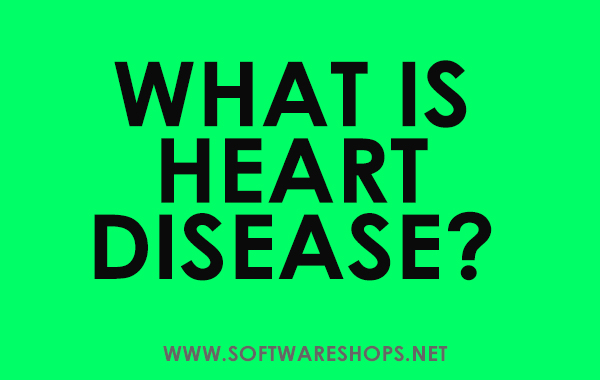The term heart disease is a very broad term. Problems can arise within the heart muscle,Guest Posting arteries supplying blood to the heart muscle, or the valves within the heart that pump blood in the correct direction. Understanding the differences between each disease of the heart can help with the confusing applications of the term heart disease.
Coronary artery disease or CAD is the most common type of heart disease and the leading cause of death in both genders in the U.S. Coronary artery disease affects the arteries supplying blood to the heart muscle. These coronary arteries harden and narrow due to the buildup of a waxy cholesterol, fatty substance referred to as plaque.
This plaque buildup is known as atherosclerosis. The increase in plaque buildup causes the coronary arteries to become narrower. This will cause blood flow to become restricted, decreasing the amount of oxygen delivered to the heart muscle.
Decreasing the amount of oxygen supplied to the heart muscle can cause angina (chest pain) and lead to a heart attack. Coronary artery disease over time can weaken the heart muscle contributing to heart failure and arrhythmias (abnormal heart rhythms).
Coronary heart disease is another confusing type of heart disease. Coronary heart disease is not the same thing as coronary artery disease. While coronary artery disease refers to the coronary arteries, coronary heart disease refers to the diseases of the coronary arteries and resulting complications.
This includes such complications such as chest pain, a heart attack, and the scar tissue caused by the heart attack. Understanding this subtle difference between the two may impress your cardiologist.
Cardiomyopathy is a disease affecting the muscle of the heart. Cardiomyopathy can be genetic or caused by a viral infection. Cardiomyopathy can be classified as primary or secondary. Primary cardiomyopathy is attributed to a specific cause (hypertension, congenital heart defects, heart valve disease). Secondary cardiomyopathy is attributed to specific causes (diseases affecting other organs).
There are three main types of cardiomyopathy. Dilated cardiomyopathy is enlargement and stretching of the cardiac muscle. Hypertrophic cardiomyopathy causes thickening of the heart muscle. Restrictive cardiomyopathy causes the ventricles of the heart to become excessively rigid causing blood flow to the ventricles to be difficult between heartbeats.
Valvular heart disease is a disease that affects the valves of the heart. Valves within the heart keep the blood flowing in the correct direction. Damage to valves can be caused by a variety of conditions leading to regurgitation or insufficiency (leaking valve), prolapse (improper closing of the valve),
or stenosis (narrowing of the valve). Valvular heart disease can be genetic. Valvular heart disease can also be caused by certain infections such as rheumatic fever, and certain medications or radiation treatments for cancer.
The pericardium is a sac that encompasses the heart. Pericardial disease is inflammation (pericarditis), stiffness (constrictive pericarditis), or fluid accumulation (pericardial effusion) of the pericardium. Pericardial disease can be caused by many things such as occurring after a heart attack.
Congenital heart disease is a form of heart disease that develops before birth. Congenital heart disease is an extremely broad term. However, these diseases usually affect the formation of the heart muscle, chambers, or valves. A few examples include coarctation or a narrowing of a section of the aorta; atrial or ventricular septal defect is referred to as holes in the heart.
Congenital heart disease should be classified more accurately as an inborn defect that occurs in around 1% of births. Congenital heart disease may be inherited (heredity), or caused by certain infections such as German measles contracted while pregnant. However, researchers are currently studying factors that may cause congenital heart disease.
Heart failure is another type of heart disease characterized by the heart’s inability to effectively pump enough blood to the body’s organs and tissues. When the body’s vital organs do not receive enough blood flow certain signs and symptoms can occur such as shortness of breath, fatigue, and fluid retention.
Congestive heart failure is a type of heart failure that leads to fluid buildup in the body. It is important to note that not all heart failure is congestive. Heart failure may result from other cardiovascular diseases such as cardiomyopathy or coronary heart disease. Heart failure may come on suddenly or develop over many years.
The month of February is the National Heart Disease awareness month. However, heart disease awareness should be each and every day. With staggering statistics, awareness begins with understanding the different types of heart disease. A diet and lifestyle that is conducive to heart health can mean the difference between life and being a statistic.
Tags: #heartdisease #healthtips
Note- The information provided on this page is for general purposes only and should not be taken as professional advice. All the content provided on this page is my own creativity.
Did you enjoy reading this post? If you did, please take a second to share it with your friends. Sharing is caring! Thank you So Much.
